Historic Quebec City: A Captivating Destination in Canada
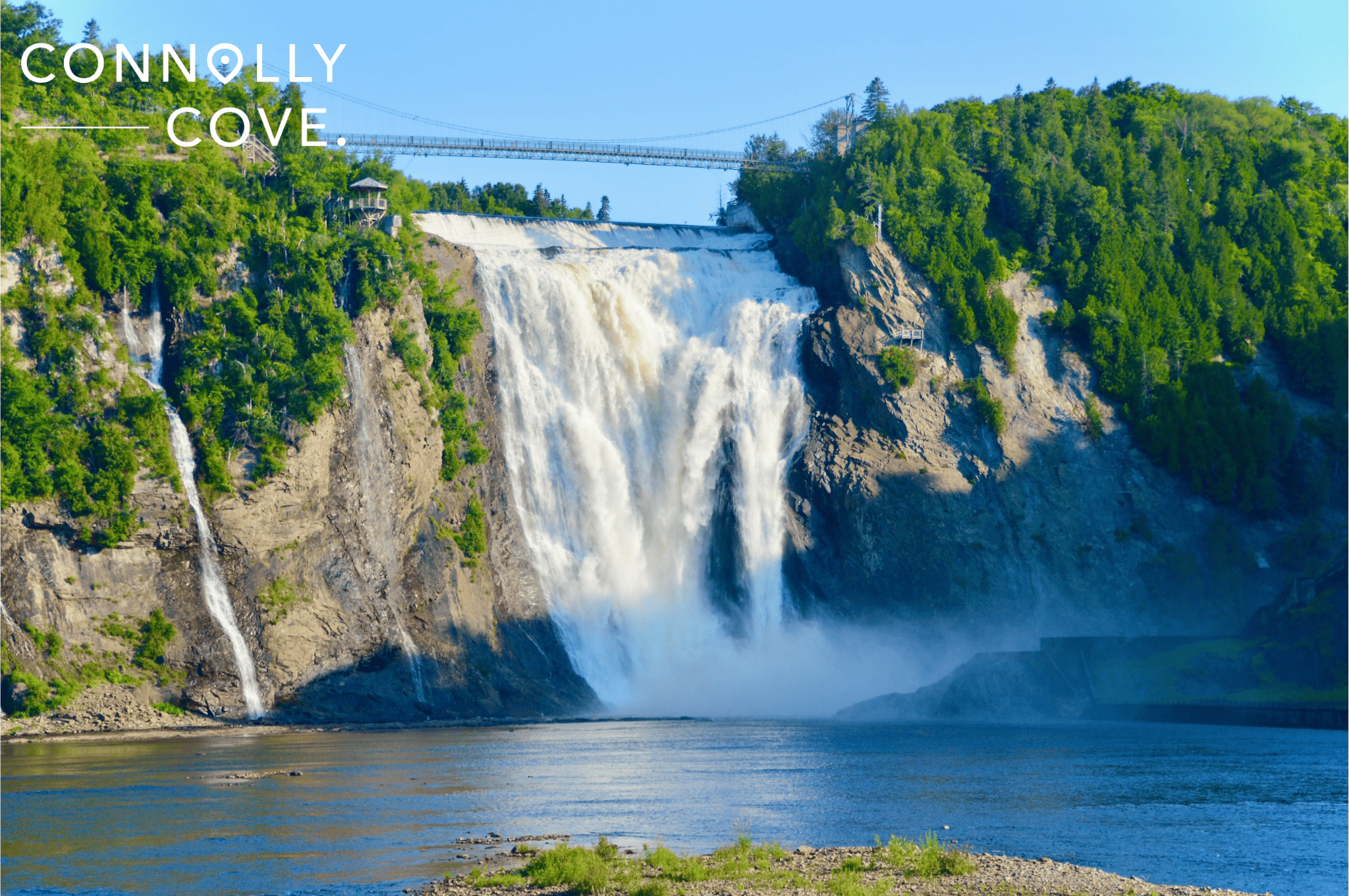
Updated On: April 24, 2024 by Courtney Augello
Founded along the banks of the St. Lawrence River, Historic Quebec City is a captivating destination that preserves the echoes of centuries gone by and offers a glimpse into Canada’s past.
With its cobblestone streets and charming architecture, this enchanting city exudes an air of timeless elegance. But beneath its picturesque facade lies a complex and vibrant history that has shaped the identity of Historic Quebec City and the entire nation of Canada.
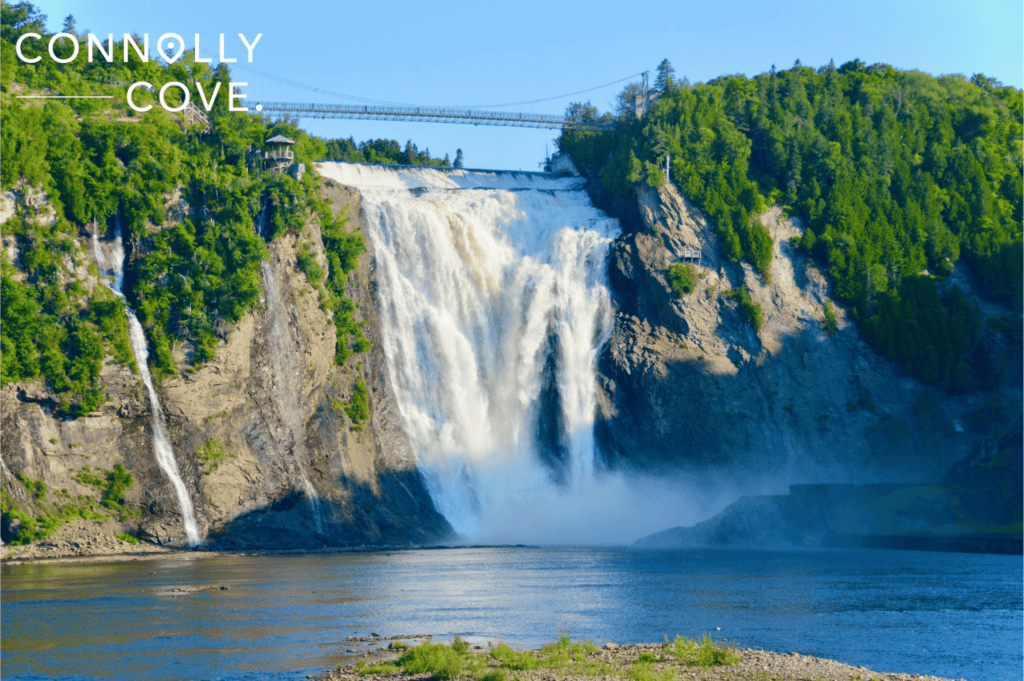
With so much to explore, there are endless ways to spend a holiday in Historic Quebec City. To help you plan the best itinerary, we’ve examined the city’s history, culture, and attractions that make it a destination like no other.
Table of Contents
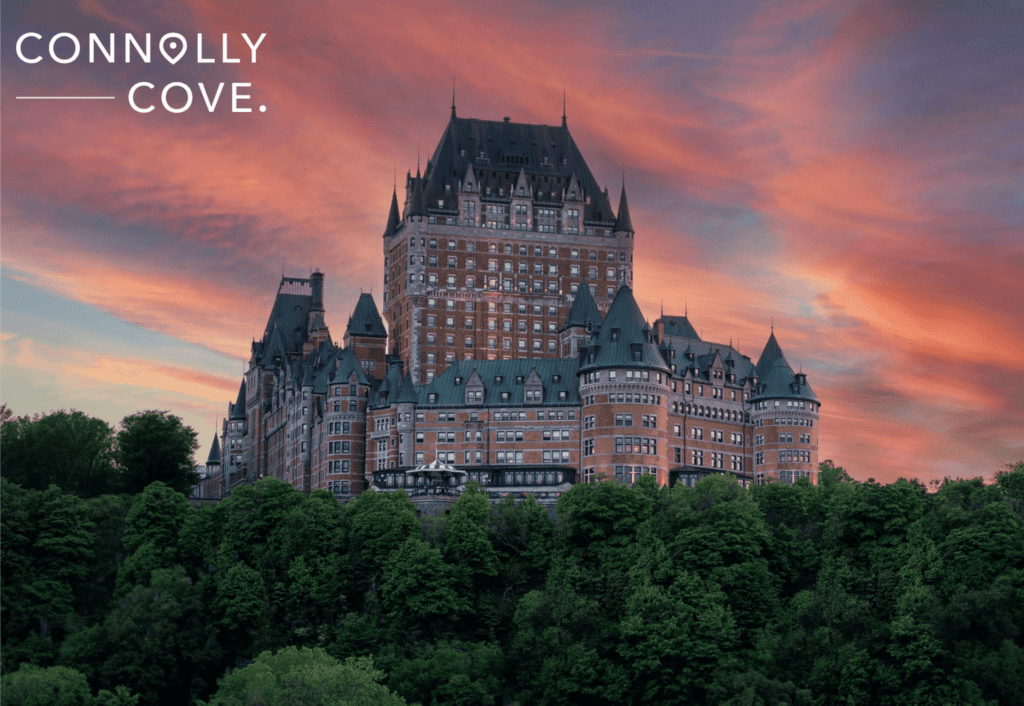
Where is Historic Quebec City?
Historic Quebec City is situated in the eastern part of Canada, in the province of Quebec. Its location is defined by its position along the northern shore of the St. Lawrence River, which made it a vital hub throughout its history.
Quebec City is approximately 395 kilometres (245 miles) northeast of Montreal, making it one of the most accessible cities in eastern Canada. Its proximity to the river and the Atlantic Ocean has played a pivotal role in shaping its history, serving as a primary transportation route for trade and conflict.
History of Historic Quebec City
Early Settlement
Historic Quebec City boasts a history that dates back to the early 17th century. In 1608, Samuel de Champlain, the French explorer and founder of New France, established a trading post at what is now known as Place Royale in the heart of Quebec City.
This humble beginning marked the birth of a settlement that would become a key player in North America’s colonial history. The strategic location atop steep cliffs provided a powerful vantage point for defence and trade, making it a coveted prize for European powers.
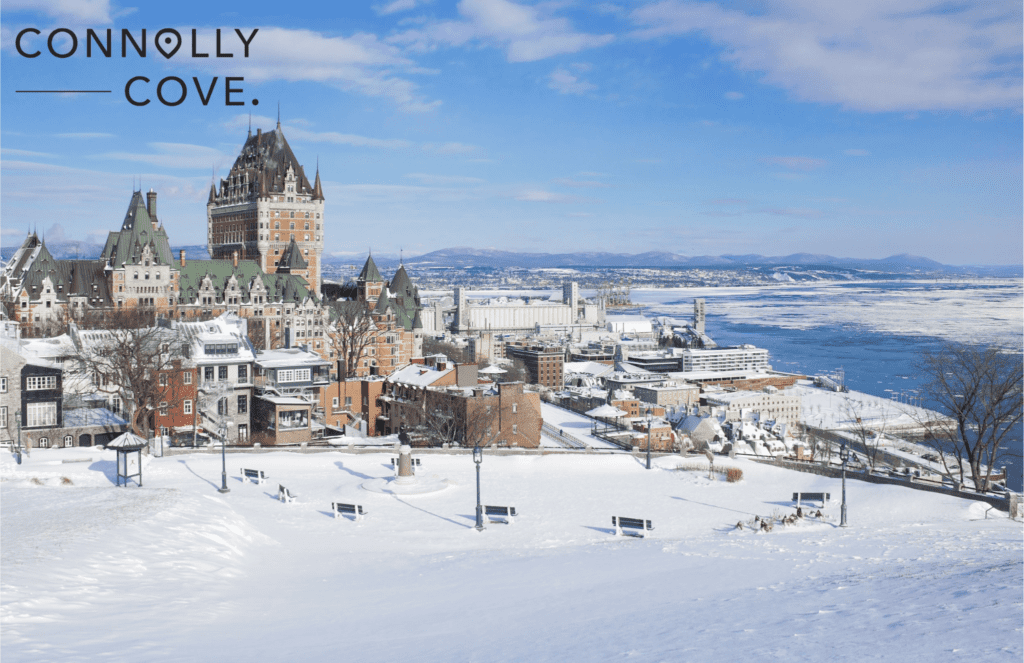
Key Historical Events
Quebec City’s history is marked by pivotal events that have left an undeniable mark on its character. One of the most significant chapters unfolded during the Seven Years’ War (1756-1763) when the British forces successfully captured the city from the French.
The Treaty of Paris in 1763 formally ceded New France to the British, heralding a new era for Quebec City as it transitioned into a British colony. The subsequent years witnessed a period of cultural transformation as British influences melded with the existing French heritage.
The Quebec Act of 1774, which recognised the rights of French Canadians to practice their religion and maintain their legal system, helped ease tensions and laid the groundwork for Quebec’s unique dual-language and legal traditions. The 19th century saw the city’s growth as an important administrative and economic centre in British North America.
Evolution of the City
Quebec City’s architecture and culture are a testament to its rich and varied history. The city’s Old Town, Vieux-Québec, is a UNESCO World Heritage site and showcases a stunning blend of architectural styles.
The Lower Town’s narrow, cobblestone streets and centuries-old buildings exude an unmistakable European charm. Conversely, the Upper Town boasts grand 18th-century structures, including the iconic Château Frontenac.
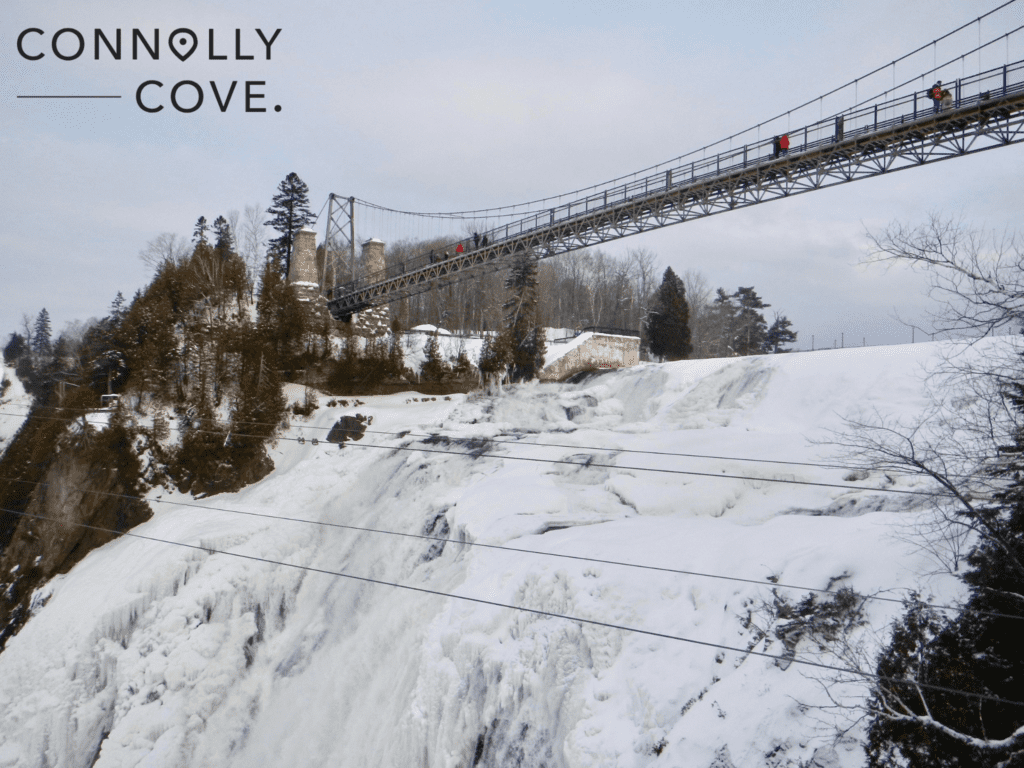
The city’s cultural tapestry is equally diverse. Quebec City cherishes its French roots, evident in the use of the French language and traditions such as the Carnaval de Québec. Yet, it is also distinctly Canadian, celebrating events like Canada Day and embracing multiculturalism.
Its unique blend of French and British heritage, combined with its picturesque architecture, captivates visitors from around the globe, offering a glimpse into the captivating story of this historic gem in North America.
Transportation in Historic Quebec City
Air Travel
Getting to Historic Quebec City is made easy through well-connected transportation infrastructure. For many tourists, air travel is the preferred option. Quebec City is served by the Jean Lesage International Airport (YQB), which is located approximately 16 kilometres (10 miles) from the city centre.
This airport offers domestic and international flights, making it accessible from Canada and beyond. Tourists can choose from different airlines that operate direct flights to Quebec City from major cities such as Montreal, Toronto, New York, and Paris.
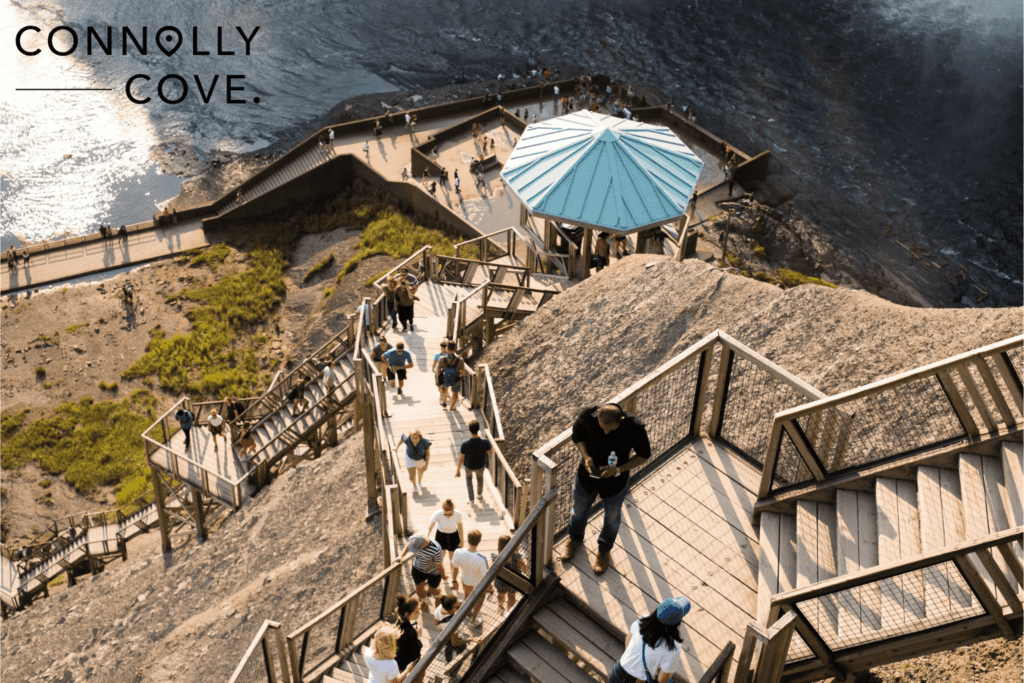
Trains and Buses
Visitors seeking a more scenic journey to Historic Quebec City can arrive on trains or buses. Via Rail operates passenger train services connecting Quebec City to other major Canadian cities, including Montreal and Toronto, with picturesque views of the St. Lawrence River and the Quebec countryside.
Additionally, several bus companies, such as Greyhound and Orleans Express, provide bus services to Quebec City from various destinations in Canada and the northeastern United States. These options offer cost-effective travel choices, and passengers can enjoy a comfortable ride while taking in the beauty of the Quebec landscape.
Roadways
Historic Quebec City’s accessibility by road is another appealing aspect of travelling to this fascinating destination. A network of well-maintained highways connects Quebec City to major cities and regions in eastern Canada and the United States.
Autoroute 20, for example, runs from Montreal to Quebec City, providing a straightforward route for those travelling by car. Tourists from the USA can reach Quebec City via Interstate 87 through New York, which crosses the Canadian border and becomes Autoroute 15.
The scenic drive through the Laurentian Mountains and the Quebec countryside allows tourists to explore the region at their own pace. Additionally, car rentals are available at the airport and within the city, allowing far-away tourists to explore Historic Quebec City and its surrounding areas.
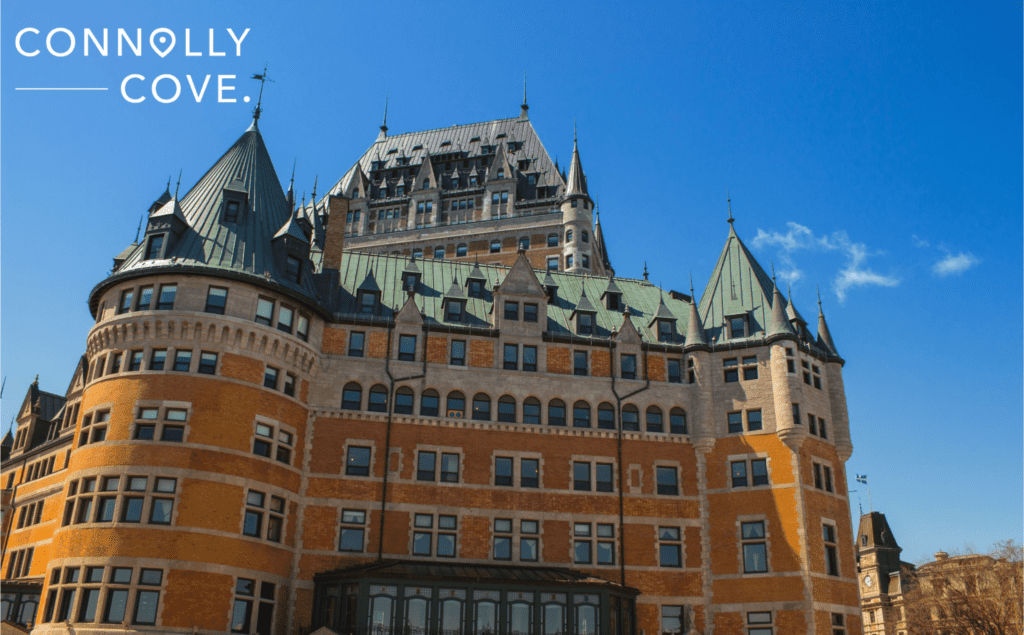
Navigating Historic Quebec City
Public Transportation
Navigating Historic Quebec City is made convenient by its well-organized public transportation system. The Réseau de Transport de la Capitale (RTC) operates a bus network that serves the city and its surrounding areas.
The RTC offers several options for tourists, including single-ride fares, day passes, and multi-day passes, making it easy to explore the city affordably. Buses in Quebec City are modern and comfortable, equipped with features like Wi-Fi, making it a convenient choice for getting around.
The bus routes cover key attractions within the city, including the historic district of Vieux-Québec, making it a great option for tourists looking to explore the city’s rich history without the hassle of driving.
Walking and Cycling
One of the most enjoyable ways to experience Historic Quebec City is on foot. The city’s historic district, with its narrow cobblestone streets and picturesque architecture, is highly pedestrian-friendly.
Exploring the Old Town on foot allows visitors to immerse themselves in the city’s ambience while exploring the bustling streets and serene beauty. Guided walking tours are available and provide in-depth insights into the history and culture of Quebec City.
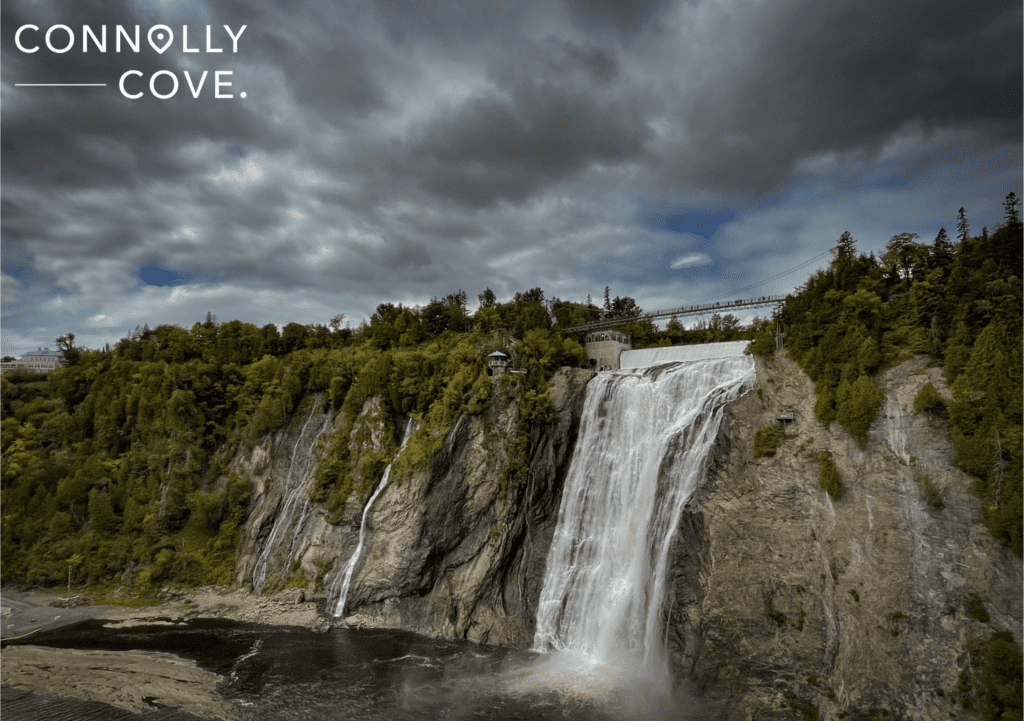
For those who prefer cycling, the city has a network of bike lanes and rental services. The diverse transportation choices make Historic Quebec City a welcoming and accessible destination for all tourists.
Areas Around Historic Quebec City
Lévis
Located just across the St. Lawrence River from Historic Quebec City, the city of Lévis is one of its closest and most accessible neighbours. Connected by the iconic Quebec Bridge, Lévis offers breathtaking panoramic views of Quebec City’s skyline and historic Old Town.
Lévis itself boasts a rich history and charming atmosphere, with its own array of historical sites and cultural attractions. Prominent among these is the Terrasse de Lévis, a sprawling boardwalk that provides visitors with stunning vistas of Quebec City, particularly at sunset.
Lévis also offers a glimpse into the region’s maritime heritage with attractions like the Musée Maritime du Québec. The convenience of ferry services and road connections makes Lévis an ideal side trip for tourists exploring both sides of the St. Lawrence River.
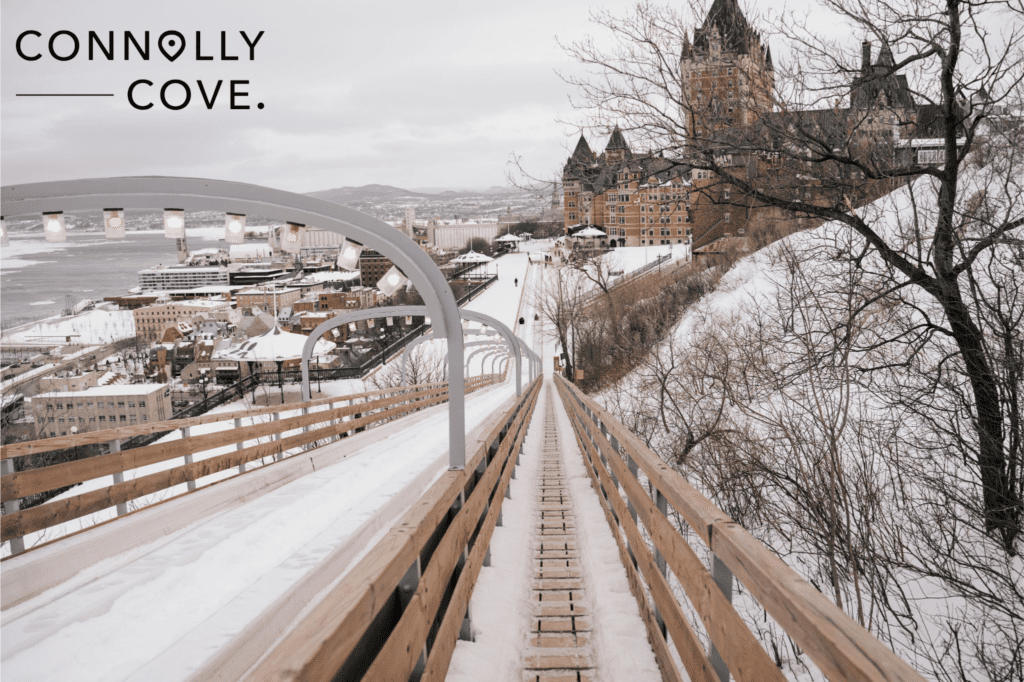
Beauport
To the northeast of Historic Quebec City lies the suburban municipality of Beauport. Known for its scenic landscapes and historic charm, Beauport offers a serene contrast to the bustling city centre.
A visit to Beauport presents the opportunity to explore a different side of Quebec’s history. Beauport is home to the historic Domaine de Maizerets, an expansive parkland showcasing beautiful gardens and heritage buildings that were once the estate of the Franquet family.
Another notable attraction is the Maison Girardin, a meticulously preserved 18th-century house museum that offers a glimpse into Quebec’s rural history. With its tranquil ambience and proximity to the city and natural wonders like Montmorency Falls, Beauport is a delightful complement to a visit to Historic Quebec City.
Sainte-Foy-Sillery-Cap-Rouge
To the southwest of Historic Quebec City lies the district of Sainte-Foy-Sillery-Cap-Rouge. This region boasts a blend of residential neighbourhoods and commercial areas while preserving a historical feel in some parts.
Visitors can explore Sillery, an affluent neighbourhood rich in history and charm. It is home to landmarks such as the Maison Pollack, an early 19th-century house, and the historic Saint-Antoine-de-Padoue Church.
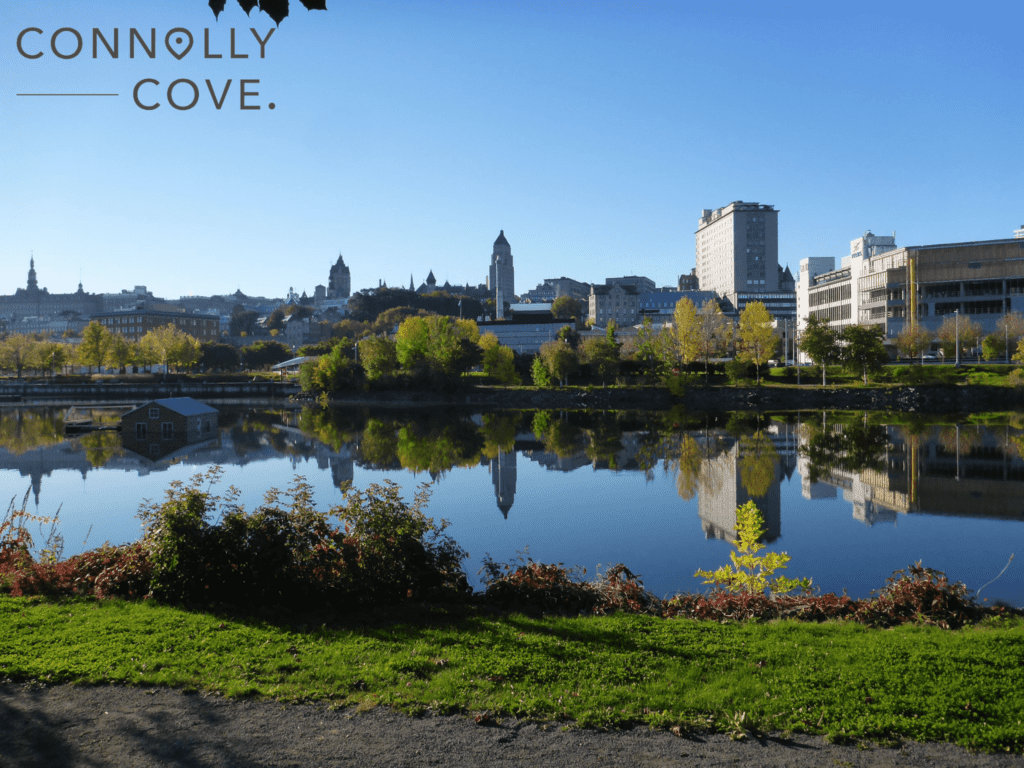
Cap-Rouge, located along the St. Lawrence River, is known for its scenic beauty and outdoor recreational opportunities. The Parc de la Plage-Jacques-Cartier offers a sandy beach and a relaxing atmosphere for picnics and leisurely walks.
Natural Attractions Near Historic Quebec City
Montmorency Falls
One of the most spectacular natural wonders near Historic Quebec City is Montmorency Falls (Chutes Montmorency). Located a short drive northeast of the city, Montmorency Falls is a towering waterfall even higher than Niagara Falls, measuring 83 meters (272 feet) in height.
The falls are captivating, particularly during the spring thaw when the rushing waters roar with impressive force. Visitors can experience the falls from various vantage points, including a suspension bridge that spans the gorge, offering breathtaking panoramic views.
The falls take on a different charm in the winter as they freeze into stunning ice formations, attracting ice climbers and outdoor enthusiasts. Montmorency Falls Park also offers hiking trails, picnic areas, and a cable car that provides convenient access to the top, making it a must-visit natural wonder in the Quebec City region.
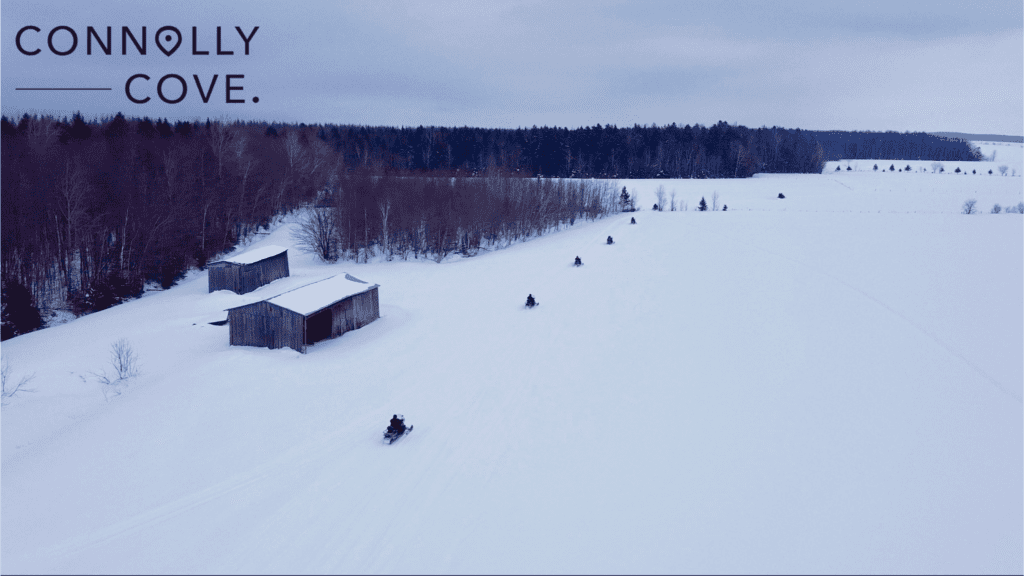
Île d’Orléans
Île d’Orléans (Island of Orleans) is a picturesque island in the St. Lawrence River that offers an escape from the busy city streets. Known as the “Garden of Quebec,” the island is celebrated for its fertile soil, which makes it a hub for agriculture and artisanal food production.
Visitors can explore the island’s charming villages and sample local delicacies like apple cider, cheese, and maple products. The island is also dotted with historic churches, heritage homes, and scenic viewpoints that provide captivating vistas of the surrounding river and countryside.
Jacques-Cartier National Park
For tourists seeking outdoor adventure amidst pristine natural surroundings, Jacques-Cartier National Park (Parc National de la Jacques-Cartier) is a remarkable destination located approximately 30 kilometres (19 miles) north of Quebec City.
This expansive national park covers over 670 square kilometres (258 square miles) of rugged wilderness, characterised by deep valleys, towering cliffs, and dense forests. The park is intersected by the Jacques-Cartier River, which offers kayaking, canoeing, and fishing opportunities.
Hiking enthusiasts can explore an extensive network of trails, including the popular Scotsman Trail, which leads to stunning overlooks of the river valley. In the winter, the park transforms into a wonderland for snowshoeing, cross-country skiing, and dog sledging.
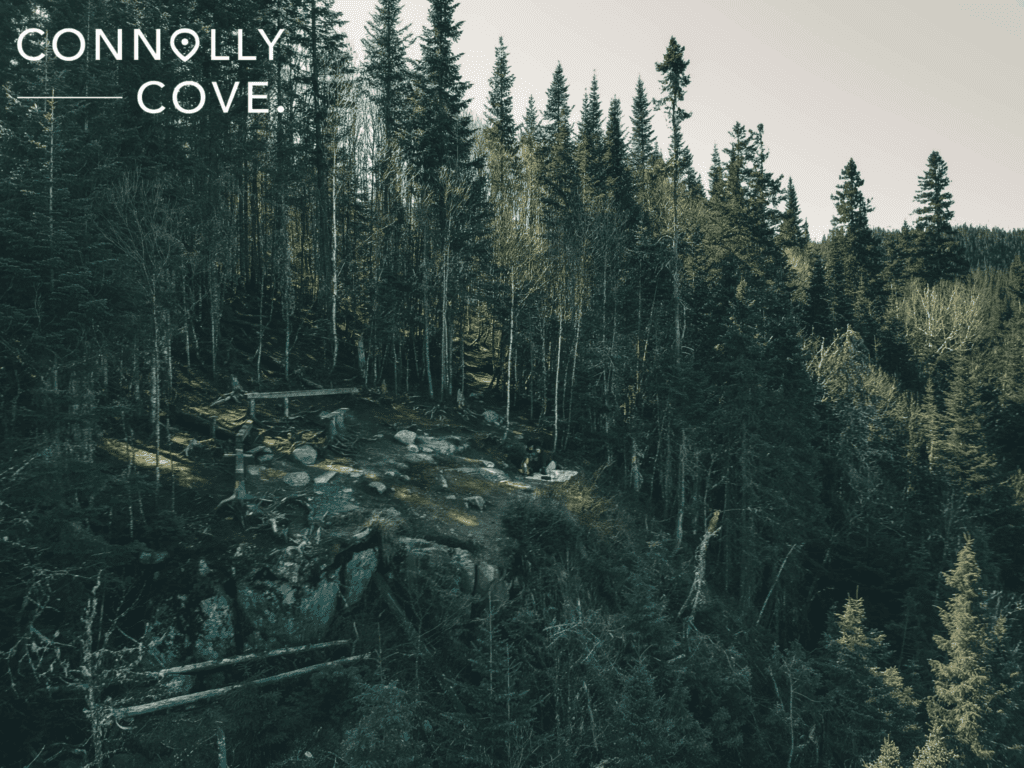
Historic Sites and Landmarks in Historic Quebec City
Old Quebec (Vieux-Québec)
Old Quebec, known as Vieux-Québec, is the heart and soul of Historic Quebec City and a UNESCO World Heritage site. This enchanting district is a living museum, preserving centuries of history within its cobblestone streets and fortified walls.
Divided into the Upper Town (Haute-Ville) and the Lower Town (Basse-Ville), Old Quebec offers a captivating journey through time. The Upper Town features iconic landmarks such as the Château Frontenac, a grand castle-like hotel that dominates the skyline, and the historic Citadel, a military fortress with impressive ramparts.
In contrast, the Lower Town immerses visitors in a more intimate setting, with narrow streets lined with quaint shops, cafes, and 17th-century buildings. Exploring Old Quebec is teeming with charming architecture, historic squares, and a vibrant cultural scene.
Place Royale
Nestled within the Lower Town of Old Quebec, Place Royale holds a special place in the city’s history. It was the site where Samuel de Champlain founded Quebec City in 1608 and is often considered the birthplace of French America.
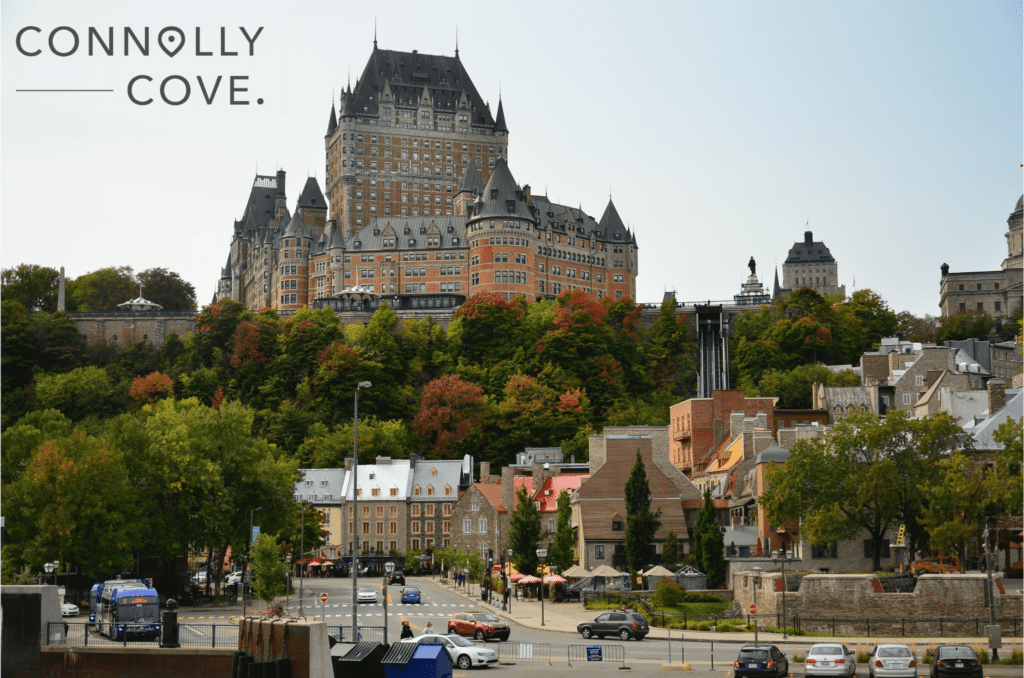
The stunning Notre-Dame-des-Victoires Church, one of the oldest stone churches in North America, adds to the area’s historic charm. Additionally, the Cobblestone streets, charming facades, and inviting cafes create an ambience that transports visitors to a bygone era.
Place Royale is a picturesque spot and a vibrant hub for cultural events and festivals, celebrating Quebec’s rich heritage and French influence. It’s a must-visit destination for history enthusiasts looking to immerse themselves in the city’s origins.
Plains of Abraham
The Plains of Abraham (Plaines d’Abraham) represent a pivotal site in Quebec City’s history and a place of great significance in Canadian history. This expansive urban park was the backdrop for the decisive Battle of Quebec in 1759 during the Seven Years’ War between the British and the French.
The battle, which resulted in the fall of Quebec to British forces, changed the course of North American history. Today, the Plains of Abraham are a peaceful and picturesque setting for visitors to enjoy outdoor activities, such as picnicking, jogging, and cross-country skiing in the winter.
The park also features historical monuments and interpretive displays, allowing visitors to learn about the battles that took place on this hallowed ground. The Plains of Abraham are a tranquil contrast to the vibrant streets of Old Quebec.
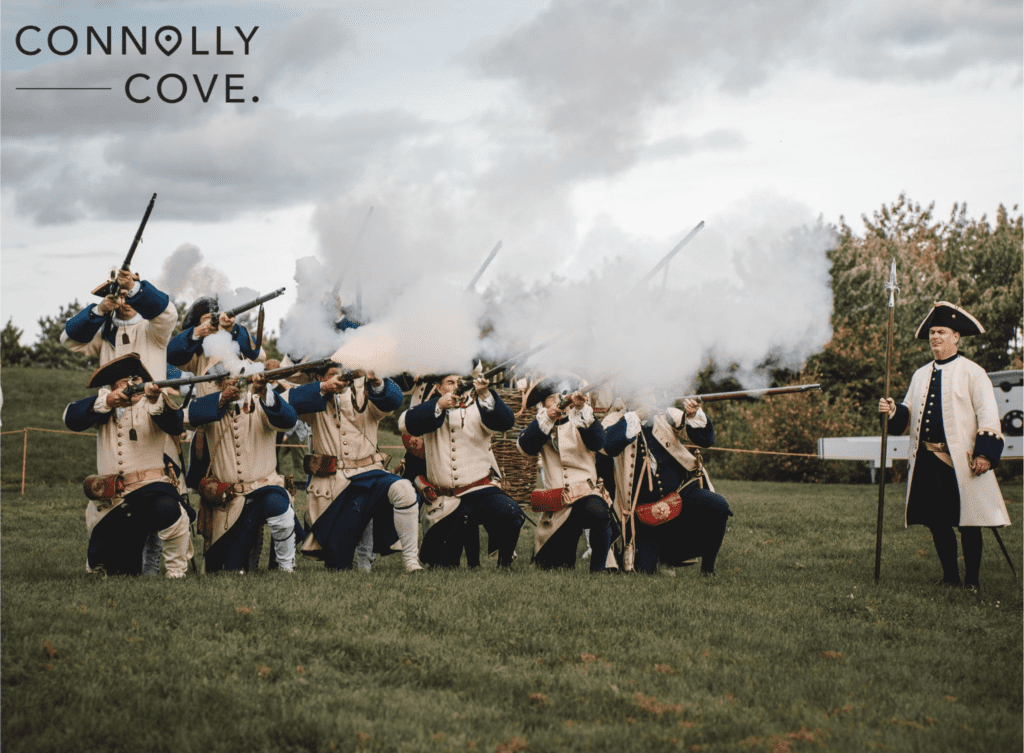
Cultural attractions
Musée de la Civilisation
The Musée de la Civilisation, or Museum of Civilization, is a cultural gem in the heart of Historic Quebec City. This museum offers a captivating journey through the history and culture of Quebec and its people.
Its diverse exhibits explore various facets of human history, from ancient civilisations to contemporary society. The museum’s interactive displays, multimedia presentations, and immersive experiences make it an engaging destination for visitors of all ages.
One of its most notable exhibitions, People of Quebec… Then and Now, delves into the rich history of Quebecois identity, providing insights into the province’s unique heritage, traditions, and contemporary life.
Musée National des Beaux-Arts du Québec
The Musée National des Beaux-Arts du Québec, or the National Museum of Fine Arts of Quebec, is a testament to Quebec’s rich artistic heritage. Located within Historic Quebec City, this museum is a treasure trove boasting a comprehensive collection of Canadian and international works.
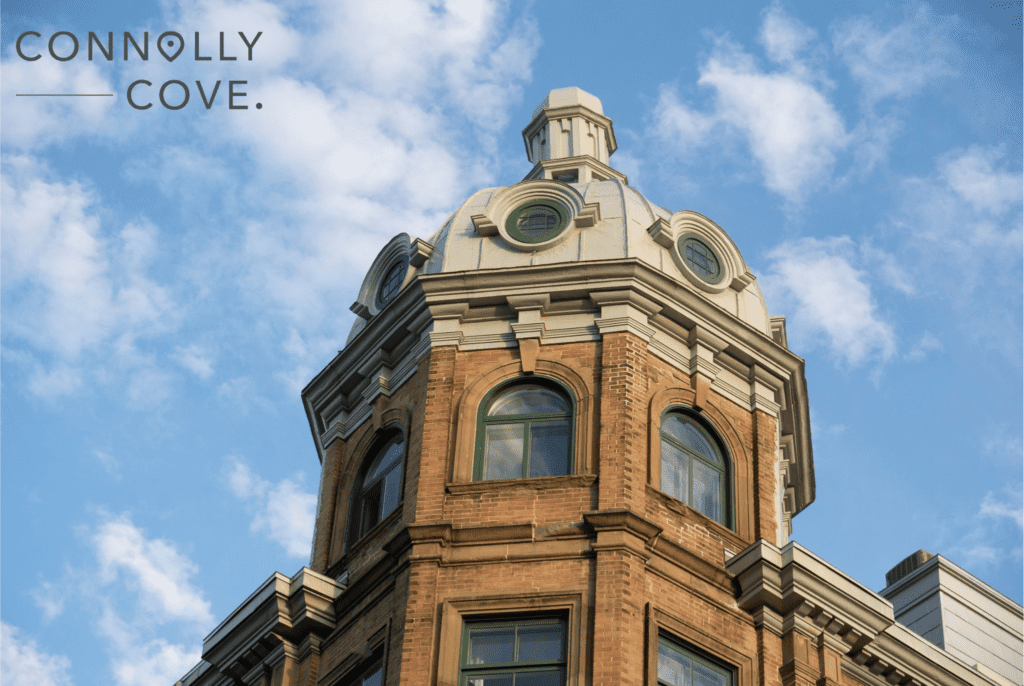
The museum is divided into two pavilions: the Pierre Lassonde Pavilion, which focuses on contemporary art, and the Charles Baillairgé Pavilion, which showcases Quebecois art from the 17th century to the mid-20th century.
Visitors can explore an array of paintings, sculptures, and decorative arts, offering insight into Quebec’s artistic evolution. The museum also hosts temporary exhibitions highlighting diverse artistic movements and providing a platform for contemporary artists to showcase their work.
Maison de la Littérature
Historic Quebec City’s Maison de la Littérature, or House of Literature, is a cultural haven for book lovers. Housed in a beautifully restored historic building in Old Quebec, this unique institution celebrates the written word in all its forms.
The Maison de la Littérature hosts literary events, book launches, readings, and exhibitions that showcase Quebec’s rich literary heritage and contemporary authors. Its library is a sanctuary, offering a diverse collection of books, magazines, and literary resources.
The architecture of the building itself is a testament to the fusion of history and contemporary design, creating an inspiring space for writers and readers alike. Whether attending a poetry reading or exploring the library’s shelves, visitors to the Maison de la Littérature are immersed in the vibrant culture of Quebec.
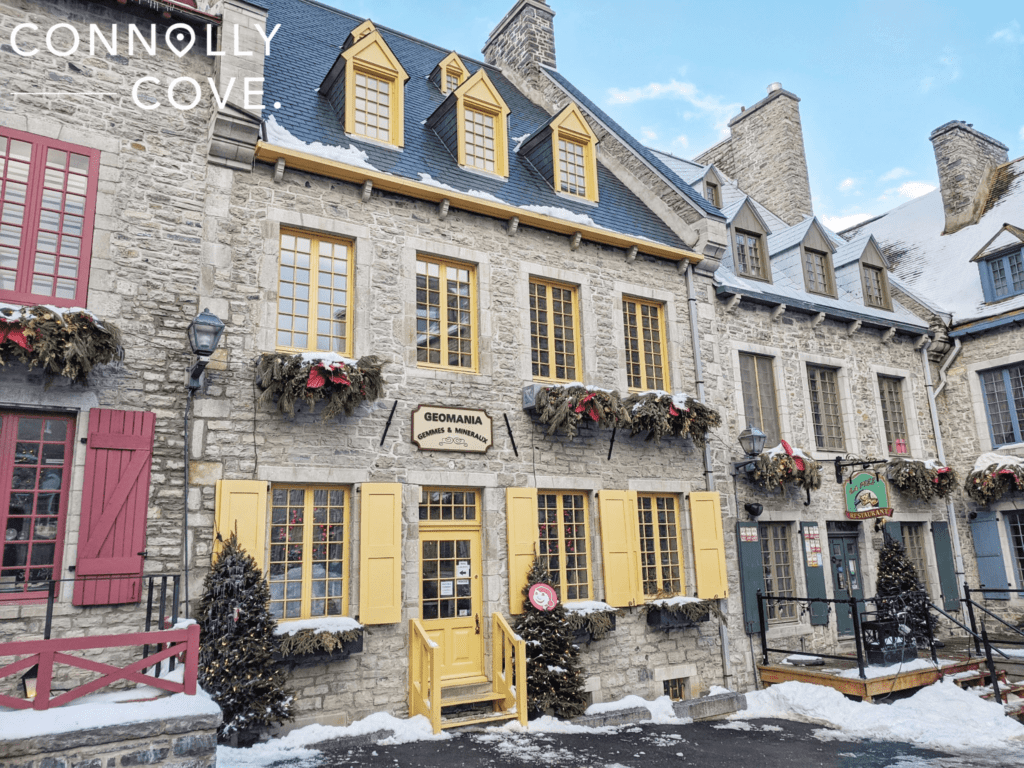
Culinary Delights of Historic Quebec City
Traditional Quebecois Cuisine
Historic Quebec City is a culinary haven that celebrates the unique flavours of Quebecois cuisine. One of the most famous dishes from Quebec is the iconic meal poutine, which consists of crispy French fries smothered in rich gravy and topped with fresh cheese curds.
Another Quebecois favourite is tourtière, a savoury meat pie traditionally filled with a blend of ground meats, spices, and herbs. Visitors to Quebec City can visit the city’s cosy bistros and restaurants to savour these and other regional specialities like cipaille (sea pie) and sugar pie.
Farmers’ Markets
Farmers’ markets are the best way to experience Quebec’s freshest and most authentic flavours. The Old Port Market (Marché du Vieux-Port) is a vibrant market situated along the St. Lawrence River, offering local products like seasonal fruits and vegetables, artisanal cheeses, cured meats, homemade jams, maple syrup, and regional wines.
In addition to the Old Port Market, the Marché du Vieux-Québec also provides an opportunity to indulge in fresh, locally sourced ingredients. The market’s open-air stalls and indoor shops create a lively atmosphere where locals and tourists come to enjoy the tastes of Quebec.
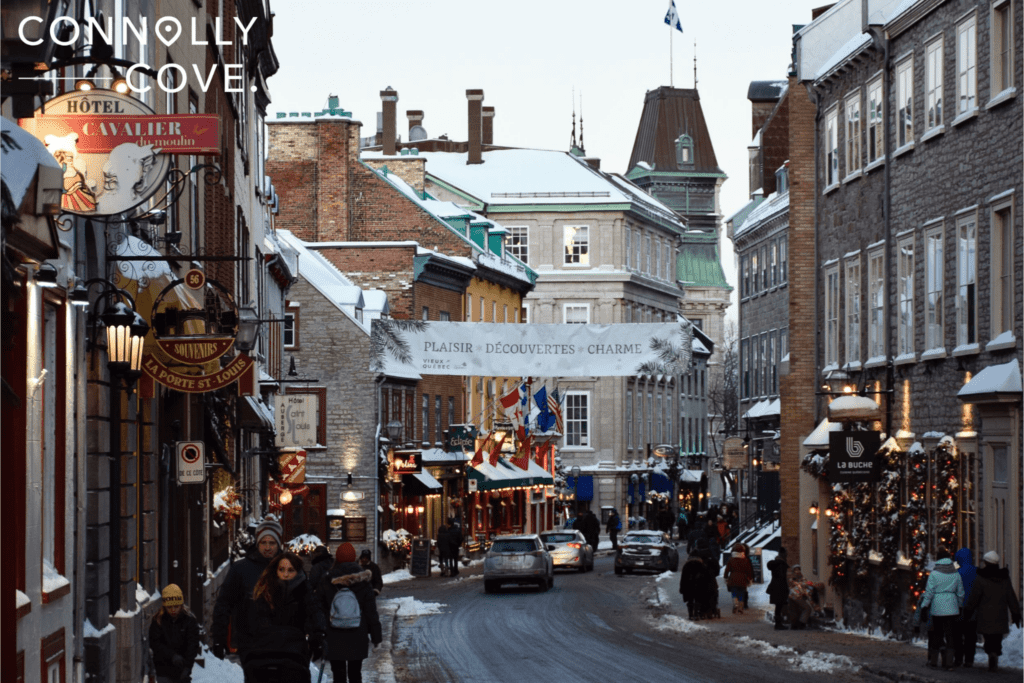
Renowned Restaurants and Cafes
Historic Quebec City boasts a thriving culinary scene with renowned restaurants and cafes catering to various tastes and preferences. For those seeking fine dining experiences, restaurants like Restaurant Initiale and Le Saint-Amour offer exquisite menus that combine traditional Quebecois ingredients with modern culinary techniques.
The city is also home to numerous charming cafes where visitors can savour freshly baked pastries, gourmet coffees, and delightful desserts. Cafe-Boulangerie Paillard and La Maison Smith are popular choices, providing a cosy atmosphere in which to relax and enjoy a taste of Quebec’s cafe culture.
Historic Quebec City’s culinary scene is a reflection of its vibrant heritage and the fusion of tradition with innovation. It is a destination where every meal is an opportunity to discover the essence of Quebecois cuisine.
Festivals and Events
Carnaval de Québec
One of the most celebrated and iconic events in Historic Quebec City is the Carnaval de Québec, also known as the Quebec Winter Carnival. Dating back to 1894, this festival is a beloved annual tradition that transforms the city into a winter wonderland.

Held in late January to early February, the Carnaval is a vibrant showcase of Quebecois culture, traditions, and the joy of winter. Festivities include ice sculptures, snow slides, dog sledging, snowshoe races, and outdoor music performances.
The highlight of the Carnaval is the Bonhomme Carnaval, a jovial snowman mascot who presides over the festivities. Visitors can immerse themselves in the festive spirit by participating in activities like ice canoe races and sampling traditional Quebecois cuisine, including tourtière and maple taffy.
Festival d’été de Québec
The Festival d’été de Québec, often referred to as FEQ, is one of Canada’s largest outdoor music festivals. It is a vibrant cultural extravaganza that takes place every July in Historic Quebec City.
Drawing renowned artists and musicians from around the world, this festival transforms the city into a musical paradise. The event features an impressive lineup of diverse music genres, including rock, pop, electronic, hip-hop, and classical.
Stages are set up at various locations throughout the city, creating a lively and dynamic atmosphere. From the historic Plains of Abraham to the bustling streets of Old Quebec, FEQ offers a multitude of performance venues that cater to all musical tastes.
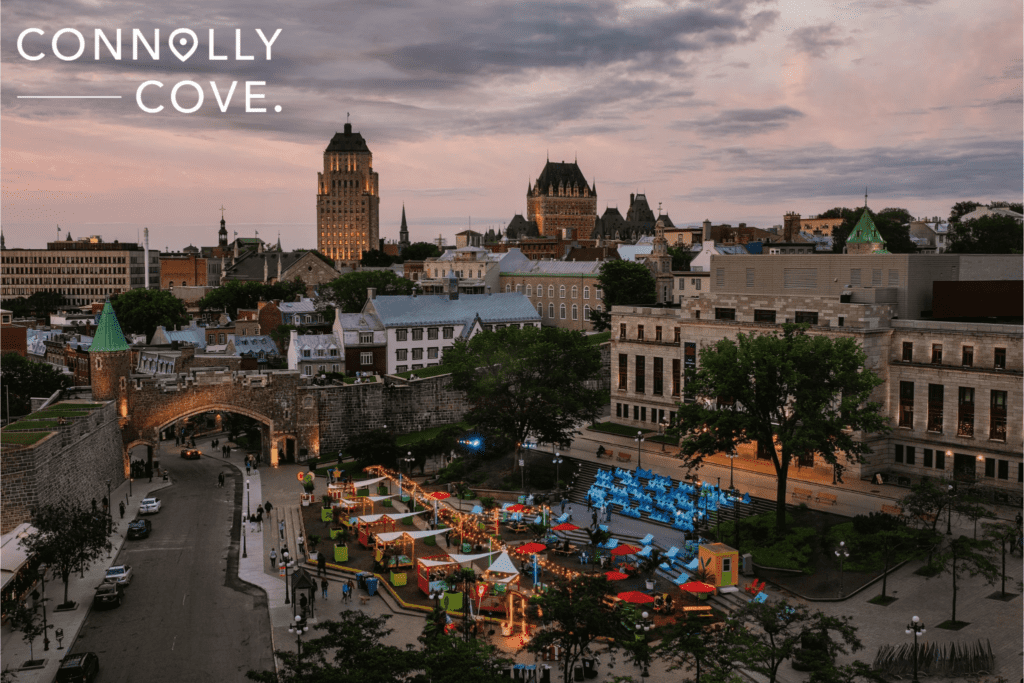
The festival’s electric energy, international allure, and stunning backdrop of historic architecture make it an exhilarating experience for music enthusiasts and festival-goers of all ages.
Quebec City International Festival of Military Bands
The Quebec City International Festival of Military Bands, known as the Festival International des Musiques Militaires de Québec (FIMMQ), is a biennial event that pays tribute to the military heritage of the city and the province.
This unique festival showcases military bands from around the world. It brings together musicians in colourful uniforms who perform diverse music, including military marches, classical compositions, and contemporary pieces.
The FIMMQ celebrates the shared cultural heritage of Quebec and its international connections, fostering goodwill and cooperation among nations through the universal language of music.
The festival includes parades, concerts, and special performances at historic sites like the Plains of Abraham, offering a remarkable experience that combines music, history, and international camaraderie.
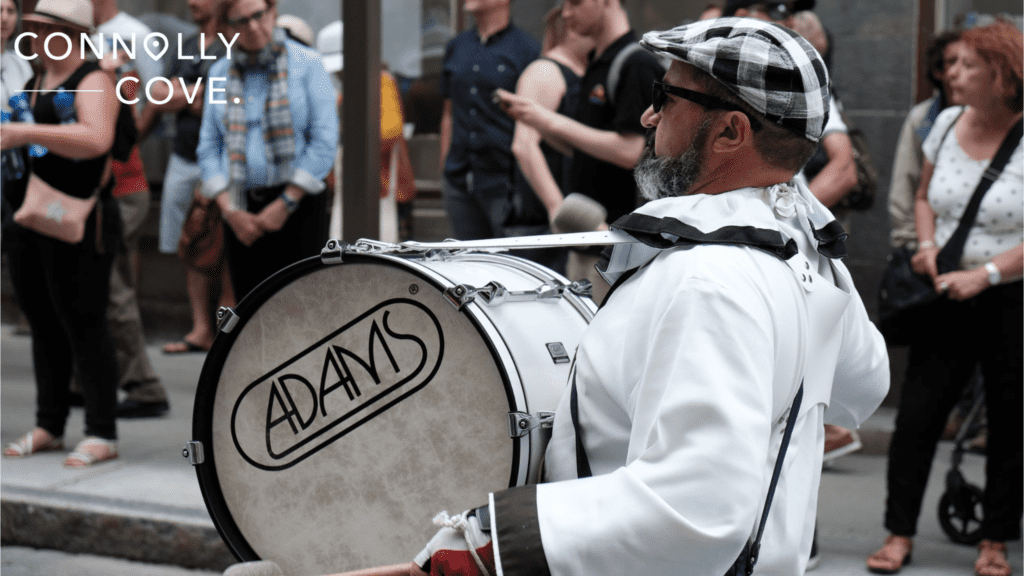
Historic Quebec City is a Fascinating Destination
Historic Quebec City is a living testament to Canada’s rich history and culture. Its origins as a French colonial settlement, its transformation into a British stronghold, and its modern-day blend of languages and influences make it a city like no other in North America.
Historic Quebec City’s history and attractions are an invitation to embark on a journey through time and culture, offering a glimpse into the past while celebrating the vibrancy of the present. It is a place where the stories of explorers, settlers, and generations of Quebecois create captivating and unforgettable memories.
If you’re visiting Canada, check out our blog on the Top Things To Do In Vancouver.






